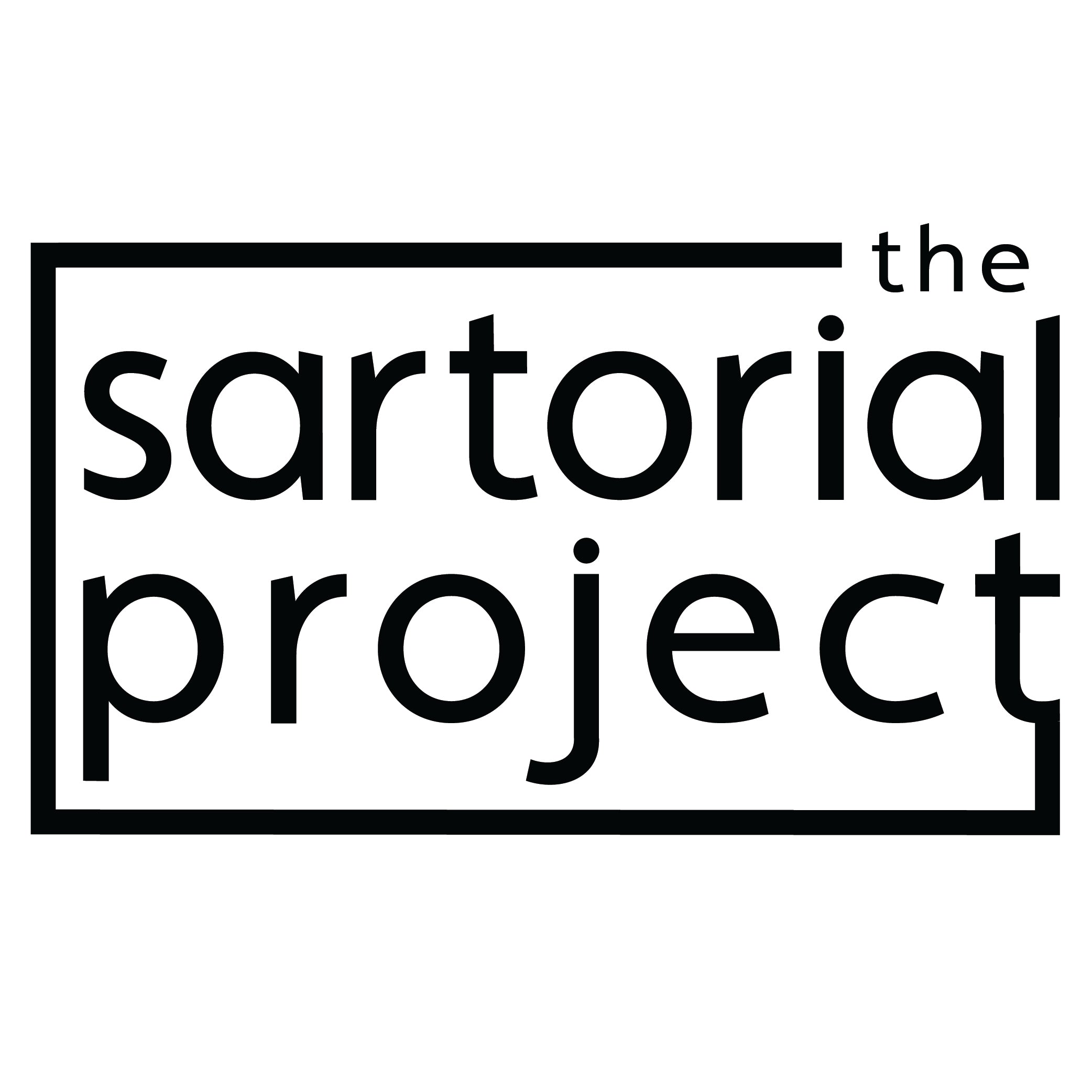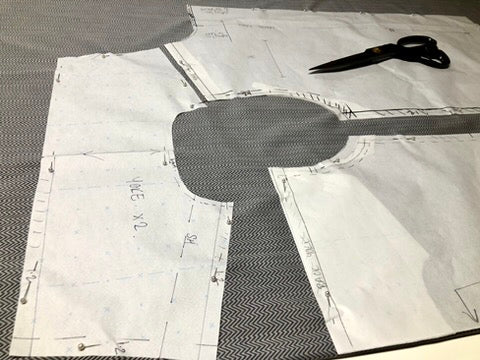Single Lay: The most economical way to cut fabric is using a flat single lay. This technique allows you to make the most of your fabric, as you can tightly 'jigsaw' your pattern pieces together using the lest amount of fabric possible.
The downside to using this technique is that you need space to be able to lay your fabric flat, and you need to remember to 'flip' pattern pieces so you cut your left and right In some instances it is beneficial to cut a left and right side of your pattern (trace an extra one), so you can see the entire garment pattern laid prior to cutting. You would use this technique for asymmetrical designed garments where one side is different to the other, or bold patterns and stripes that need to match.
This technique is also good for thick and bulky fabrics that are maybe difficult to cut with scissors.
Single lay between paper: Some fabrics are fragile and move when cutting. Even with abundant pinning, the fabric can still move which can be very frustrating. Fabrics that would fit into this category are silk chiffon and georgette, open and fine weave fabrics.
The best way to handle these is by using a piece of thin paper (tissue paper works) at the bottom of the fabric and one at the top. 'Sandwich' your fabric between the paper and then pin or trace your sewing pattern on to the top layer (this is referred to as a marker). This technique will stabilise the fabric when cutting. Using a rotary cutter to cut will also help, as the fabric is not lifted from the table surface when cutting. It does seem a waste of paper, but when put into perspective of the cost of fabric, this step can save a lot of money and will provide you with a more accurate outcome.
Folded lay: The other technique is requires you to fold the fabric in half, usually with right sides together. This technique takes up a lot less space, but often there is a bit more fabric wastage. It is a good technique to use if you are new to sewing and sewing patterns. When the fabric is cut, this will give you a 'pair'. This also ensures that 'on the fold' patterns are cut 'on the fold'.

